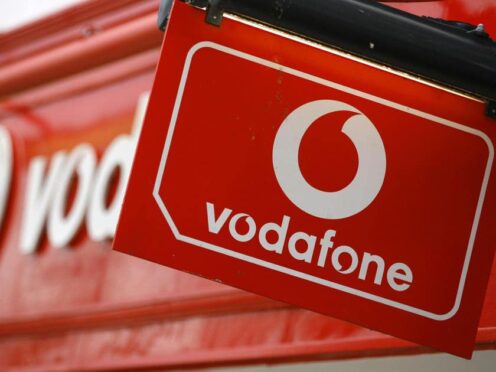Vodafone has returned to growth across its key markets as it presses on with a turnaround process and waits for a decision from regulators on a potential merger with Three UK.
The telecoms giant said it was making progress on a restructuring plan which has included selling off its underperforming Italian and Spanish businesses and cutting thousands of jobs.
Vodafone said service revenue grew 6.3% to 29.9 billion euros (£25.7 billion) in the year ending March 31.
Overall revenue and operating profit dropped after several business sales inflated figures in the previous year.
It is about halfway through a job cuts programme which will eventually see it make 11,000 people redundant across the entire business, as previously announced.
Chief executive Margherita Della Valle said 5,000 cuts had been made, while 2,000 more have been confirmed.
She said 1,000 further cuts had come from the sale of the Spanish business, while the final 3,000 more cuts would be announced in the next two years.
Vodafone had about 104,000 staff before the job-cutting programme, with 9,000 people in the UK, including at its headquarters in Berkshire.
Revenue in Germany, Vodafone’s biggest market, fell to £11.1 billion from £11.3 billion last year, but returned to growth in the final quarter. UK revenue was roughly stable at £5.9 billion.
Meanwhile, Vodafone’s proposed merger with Three UK remains in “deep conversations” with the Competition and Markets Authority, but is “progressing well,” Ms Della Valle said.
She said: “The substance of the merger remains the one we have discussed in the past that should be really attractive to all stakeholders, not just our customers but also the broader UK base with more investment in our network that will trigger more investment for everyone.”
It comes after the government said it would conditionally approve the merger on national security grounds, leaving the final decision with the CMA.
Ms Della Valle said the company is “now delivering growth in all of our markets across Europe and Africa”.
“Much more still needs to be done in the year ahead. We will step up investment in our customer experience, improve our underlying performance in Germany and accelerate our momentum in business, whilst also continuing to simplify our operations throughout the group.”
Matt Britzman, an analyst at Hargreaves Lansdown, said investors should not “confuse progress with a completed transformation”.
“Vodafone is still facing plenty of challenges, from higher costs to a core German market that’s still under pressure,” he said.
“The transformation is starting to take shape, but before getting too excited, markets will need to see sustained top-line growth over the coming year and a tighter grip on costs.”
